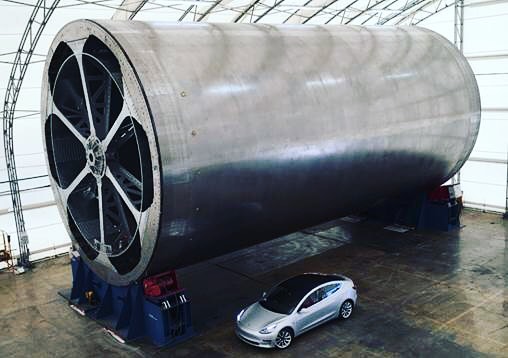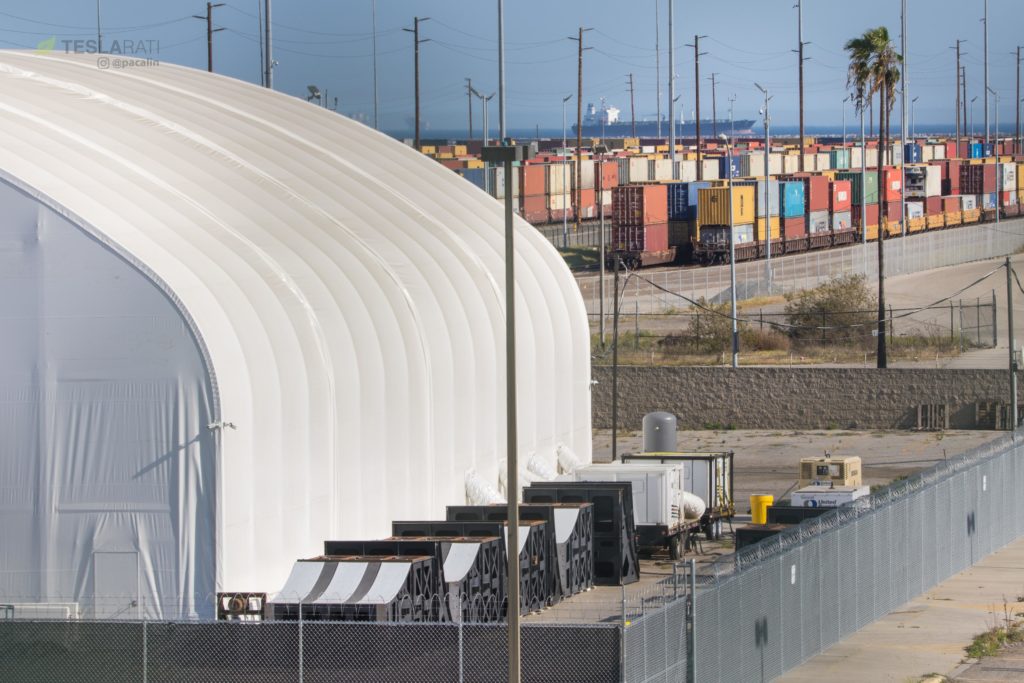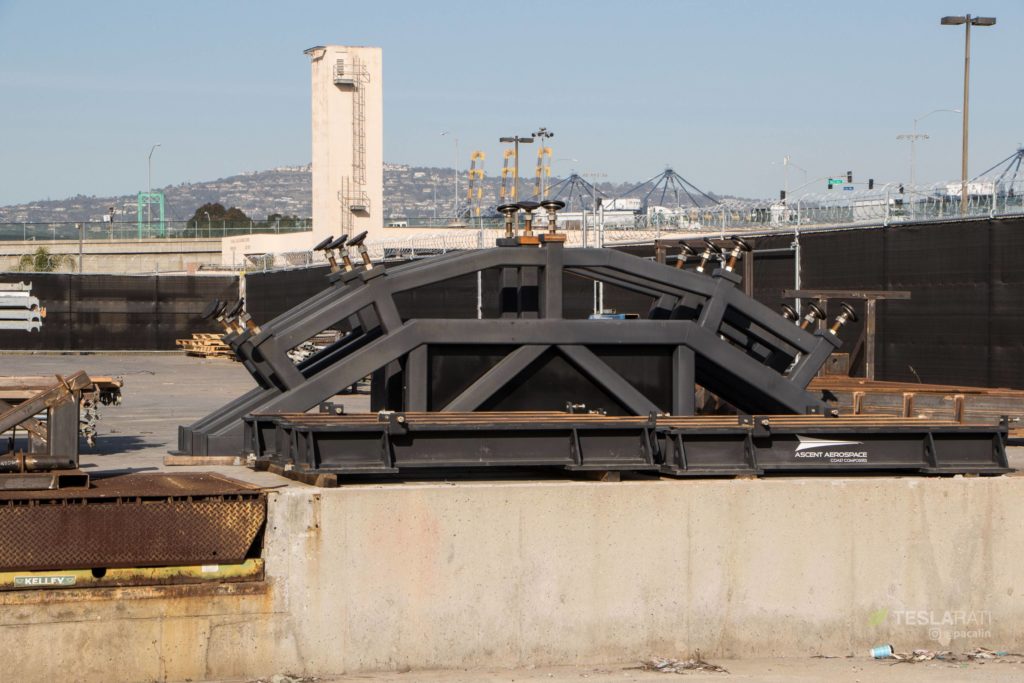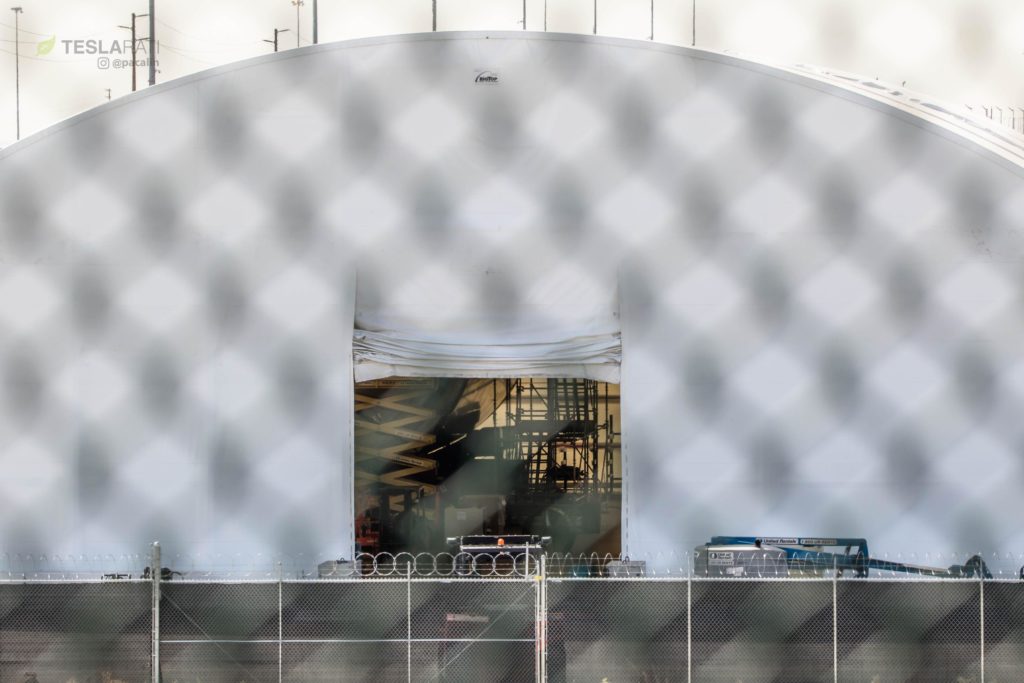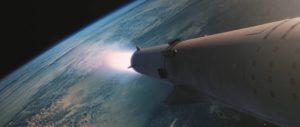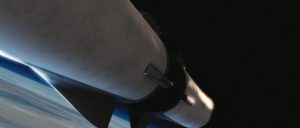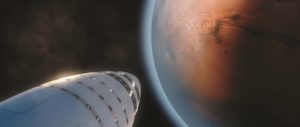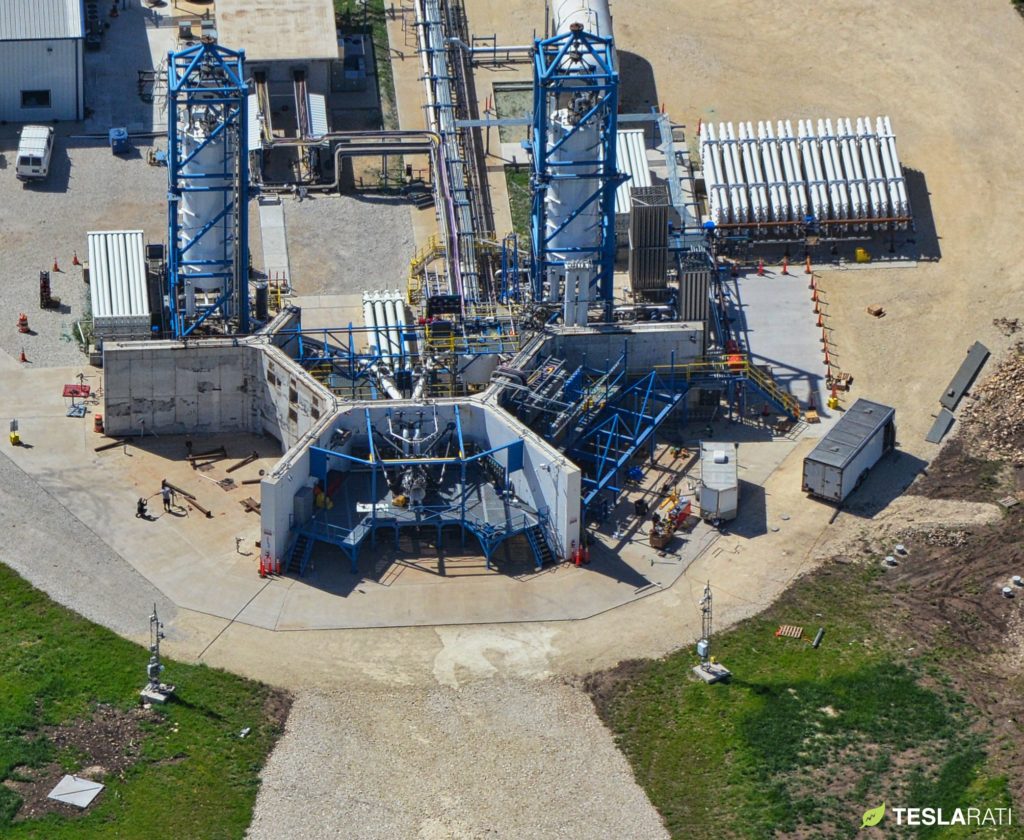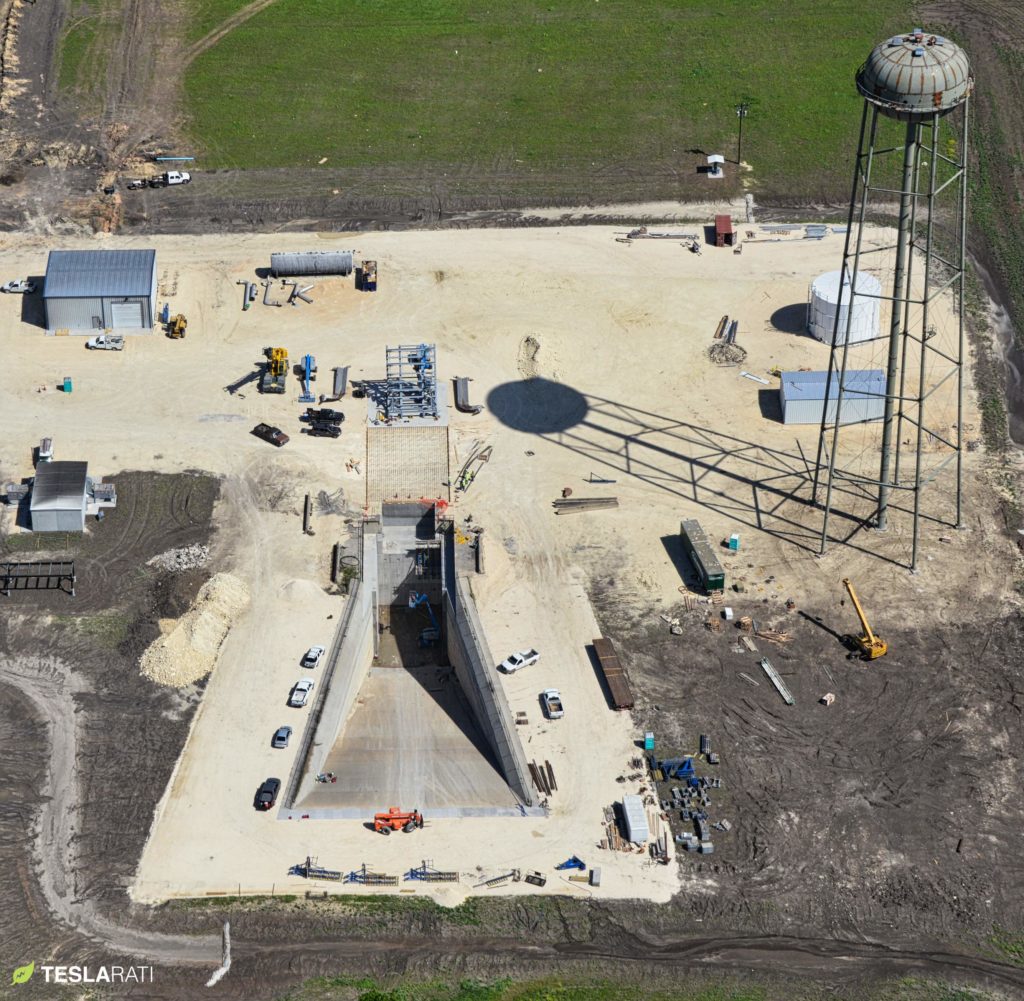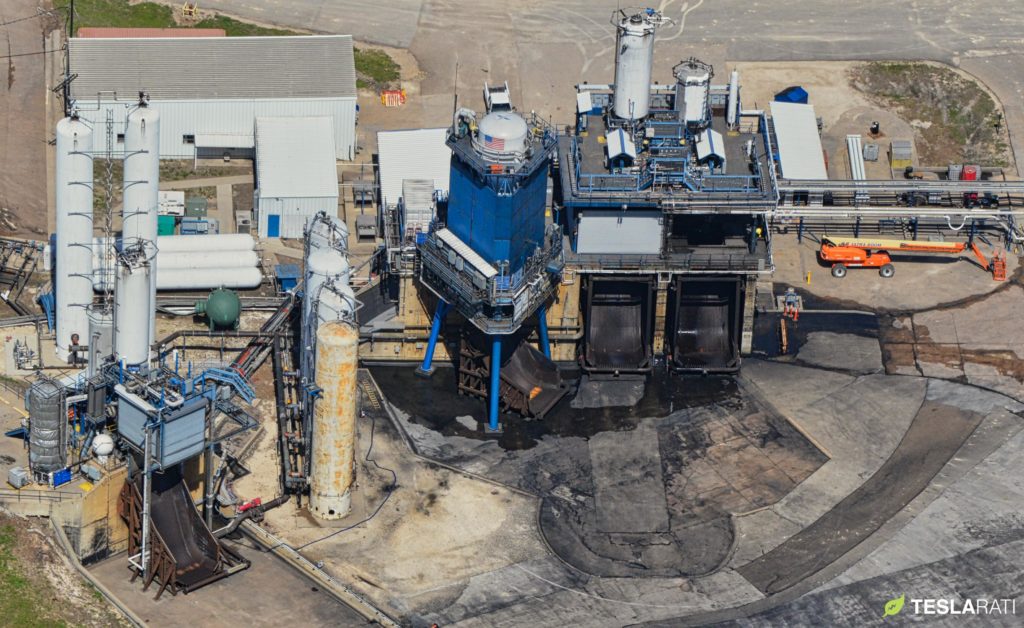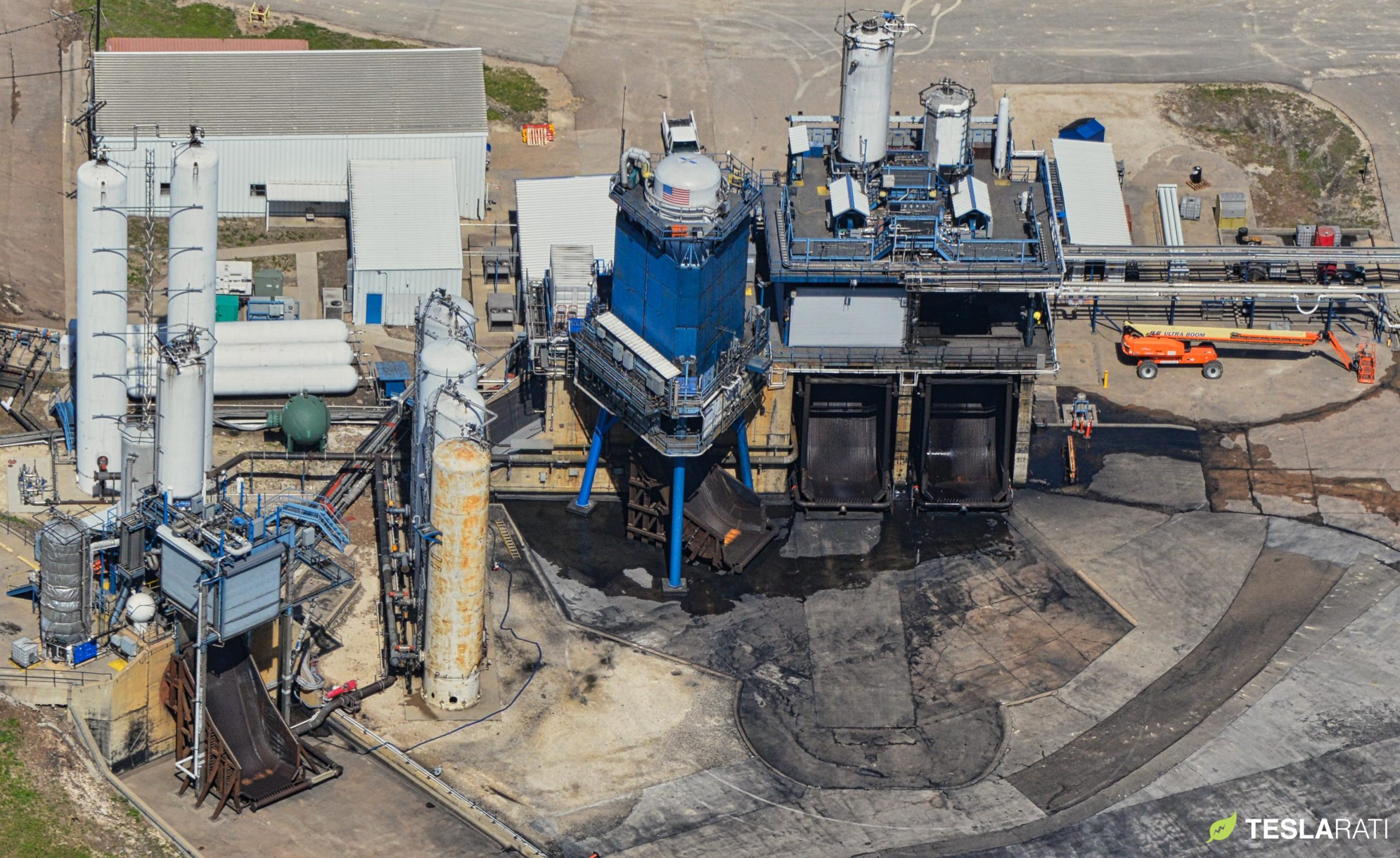
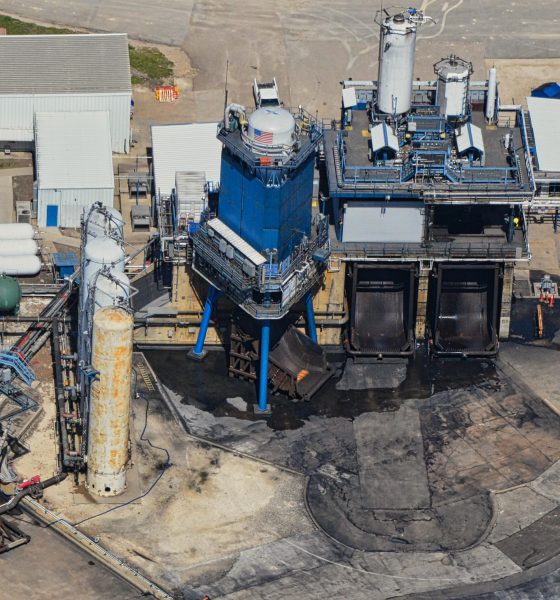
News
SpaceX execs bullish on BFR as Mars rocket test facilities expand in Texas [photos]
Aerial observations of SpaceX’s McGregor, Texas testing facilities on April 17 revealed an unusually frenetic level of construction and expansion centered around Raptor – the rocket engine intended to power BFR and SpaceX to Mars – and a new test-stand, the purpose of which is currently unknown.
With a minimum of 1200 seconds of hot-fires under its belt, SpaceX’s Raptor propulsion program is likely rapidly approaching the end of what is best described as the experimental phase of testing. While this has not been communicated by SpaceX, it is a logical conclusion following several recent developments. Namely the true beginning of BFR test article fabrication and an impressively bullish level of commitment and confidence in the fully reusable launch system demonstrated in the last few months alone by CEO Elon Musk and President/COO Gwynne Shotwell. While Musk is infamous both within and beyond his companies for painfully impractical development timelines, he demonstrated some level of growing consciousness of that fallibility at 2018’s SXSW, stating that he was working on recalibrating his expectations. Without taking a breath, he reiterated his anticipation for short hop tests of the first full-scale spaceship prototype in the first half of 2019.

SpaceX’s three-bay Raptor test stand as of April 17. The middle bay is currently home to the subscale Raptor test program. (Aero Photo)
While anyone familiar with Musk’s timeline antics may roll their eyes and laugh, far more shocking was Shotwell’s sudden pivot towards a new sense of optimism for the BFR program. At Satellite Conference 2018, the typically reserved and pragmatic executive confirmed beyond any doubt that she had become aggressively bullish on the Mars rocket, stating that she believed the spaceship would be ready for suborbital testing in 2019, while the booster-spaceship system could potentially reach orbit by 2020. Musk and Shotwell’s suggestion that BFR’s first suborbital testing – akin to an extreme version of SpaceX’s Grasshopper and F9R programs – is expected to begin in 2019 meshes well with a recent explosion of activity at Port of San Pedro in Los Angeles, CA, thanks to a combination of land acquisition, successful bureaucracy-wrangling, and the first hints of construction and BFR production. It’s highly unlikely that SpaceX would have chosen to temporarily move BFR prototyping into a giant tent on abandoned dock space rather than waiting for port and city approvals for their permanent port factory if they were not keen on moving full speed ahead with the fully reusable launch vehicle’s development.
SpaceX has completed over 1,200 seconds of firing across 42 main Raptor engine tests. pic.twitter.com/EhxbPjd8Cj
— SpaceX (@SpaceX) September 29, 2017
SpaceX’s Director of Real-Estate Bruce McHugh was less confident when he spoke before Port of San Pedro’s board of commissioners on April 19, although all in attendance expressed a huge amount of excitement at the increasingly likely prospects of a huge SpaceX rocket factory materializing in their neighborhood. Local contractors, economic development representatives, and many other community members were eager for the approval and permitting process to finish up, after which SpaceX is characteristically likely to begin demolition and construction in earnest at Berth 240, the prospective site for the company’s first dedicated BFR factory.
Early phases of in-house BFR structures prototyping is taking shape behind the flaps of a custom-ordered temporary tent, something like 60m long, 30m wide, and ~15m tall at the highest point – half an acre of eccentric but functional space for Mars rocket R&D, in other words. The primary benefit of these facilities’ dock-side locations is the minimization of the transportation hell that SpaceX would have had to suffer through to transport 9m-diameter rocket hardware through downtown Los Angeles – feats that would cost as much as $2.5 million one way each time components had to be moved from the Hawthorne factory to the Port of LA, where it would be finally shipped to Texas or Florida.
- SpaceX’s first major BFR and BFS fabrication tooling, likely being stored temporarily in a tent at Port of San Pedro. Note the tent framework at the top. (Elon Musk)
- Just a casual line of car-sized steel segments hanging around outside the BFR tent. (Pauline Acalin)
- It’s understood that SpaceX will eventually move this work to Berth 240 once more permanent facilities are constructed. (Pauline Acalin)
- SpaceX’s BFR tent and mandrel, caught on April 14th. (Pauline Acalin)
Speaking at a private talk given to MIT campus members in October 2017, attendees reported that Shotwell stated that although “[BFR’s] composite tanks [would] be a challenge [for SpaceX],” the company was already working on maturing the technologies required, and also noted that SpaceX was “building a larger [version of] Raptor right now.” Half a year later, outsiders have heard nothing of any additional carbon composite propellant tank testing at the new 9m diameter, but the existence of custom-ordered (i.e. very expensive and specialized) composite fabrication tooling of the same diameter as BFR effectively guarantees that SpaceX has settled upon and is confident in its approach to manufacturing the massive composite tankage and structures. Along with a similar line of thought, expensive tooling with a fixed diameter also indicates – albeit with less certainty – that the vehicle’s Raptor propulsion system is not expected to change significantly as BFR marches closer to suborbital and orbital testing. Raptor, in other words, is probably considerably more mature than SpaceX’s composite tankage expertise, itself fairly advanced given the mandrel and additional fabrication tooling already present at Port of San Pedro.
And yet, Shotwell’s most telling display of confidence occurred just a handful of days ago at the TED2018 conference. In a lengthy and fairly well-orchestrated interview with the session’s host Chris Anderson, Shotwell repeatedly and happily made comments indicating that she has become extremely bullish on BFR and BFS in the last several months. In her opinion, BFR (and point-to-point Earth transport) will be deployed “within a decade, for sure.” Prices would nominally be “between business and economy,” or a few thousand dollars per person. Speaking on the trip from Earth to Mars, she estimated a three-month journey with BFR Block 1, “but [SpaceX is] gonna try to do it faster.” She further confirmed that SpaceX intends to build much larger BFRs, meshing with Elon’s suggestions that 2016’s ITS concept is now perceived internally as a sort of BFR Block 2. Perhaps most importantly, she qualified her timeline estimates as “Gwynne-time” when Anderson jokingly deadpanned about the infamous Elon-time. Overall, Shotwell came across as more bullish than she has ever been before on BFR’s development and future prospects, including both point-to-point transport on Earth and crewed missions to the surface of Mars – both of which she expected to begin “within a decade, for sure.” Smirking, she quipped that she was “sure Elon would want us to go faster.”
- BFR heads to orbit in an updated overview of the Mars rocket. (SpaceX)
- Note the 2017/early-2018 variant’s single delta-wing and extendable leg pods (silver). (SpaceX)
- According to Hans Koenigsmann, this vision may actually be incompatible if NASA and the US government are given too much control. (SpaceX)
Not one to end on a quiet note, the typically pragmatic executive finished by describing how she believed that spreading human presence throughout the Sol System was only “the first step [towards] moving to other solar systems and potentially other galaxies; I think this is the only time I ever out-vision Elon.” Interstellar travel and faster-than-light propulsion aspirations aside, Shotwell’s comments mark a fairly incredible shift in attitude toward SpaceX’s far loftier ambitions. Musk seems to be working to recalibrate his timelines to be less naive at the same time as Shotwell’s confidence is steadily growing – the two executives, in other words, appear to be rapidly converging upon a middle ground of pragmatic optimism (that or Musk-time is contagious!).
- Raptor’s McGregor, TX engine test bays are seen here in April 2018. A subscale Raptor prototype is visible in the center bay. (Aero Photo/Teslarati)
- A new rocket test-stand takes shape at SpaceX’s McGregor, TX facilities. As of just a few months ago, this site was effectively barren of activity. (April 17, Aero Photo)
- SpaceX’s Merlin 1D (Vacuum and Sea Level) tests stands, as well as a bay for upper stage static fires. (April 17, 2018 – Aero Photo)
As shown above, the level of construction activity at SpaceX’s Texas testing facilities is fairly impressive and could perhaps be seen as evidence that both Musk and Shotwell are speaking from a place of something approaching pragmatism. While the purpose of the new stand (center) is not yet clear, several aspects indicate that it is unlikely to be more mundane. First, the massive water tower (one that did not exist just a month or two ago, might I add) dwarfs anything found at individual engine or upper stage test stands at the SpaceX facility. It’s possible that the existence of the flame trench alone necessitates the inclusion of such a large water suppression system for damage prevention, but the presence of the blue steel skeleton of a new flame bucket (operational iterations shown on the right) suggests otherwise. For example, the Merlin stands have no such water suppression system: they do use water suppression to avoid damaging the ground systems or the engines themselves, but that water is stored in a large ground-level tank. A tower, however, indicates that SpaceX wants much higher water pressures and flow rates to be available at the new stand, a requirement for significantly more powerful tests akin to SpaceX’s full-up Falcon 9 (and Heavy) test stand – the water towers at the S1 stand and this new stand appear to be identical in size.
In other words, it’s more probable than not that this new stand is being built to support either booster static fires or much larger tests of BFR hardware (perhaps multiple Raptors at once, akin to SpaceX’s very early tests of Falcon 9’s nine Merlins). It could, of course, be used for many different tasks, but only time will tell. Given the sheer level of physical progress made in the BFR program and the swelling confidence of Musk and Shotwell, I certainly know where I’d hedge my bets.
Follow us for more live updates, behind-the-scenes sneak peeks, and a sea of beautiful photos from our East and West coast photographers.
Teslarati – Instagram – Twitter
Tom Cross – Twitter
Pauline Acalin – Twitter
Eric Ralph – Twitter

Elon Musk
Starlink passes 9 million active customers just weeks after hitting 8 million
The milestone highlights the accelerating growth of Starlink, which has now been adding over 20,000 new users per day.

SpaceX’s Starlink satellite internet service has continued its rapid global expansion, surpassing 9 million active customers just weeks after crossing the 8 million mark.
The milestone highlights the accelerating growth of Starlink, which has now been adding over 20,000 new users per day.
9 million customers
In a post on X, SpaceX stated that Starlink now serves over 9 million active users across 155 countries, territories, and markets. The company reached 8 million customers in early November, meaning it added roughly 1 million subscribers in under seven weeks, or about 21,275 new users on average per day.
“Starlink is connecting more than 9M active customers with high-speed internet across 155 countries, territories, and many other markets,” Starlink wrote in a post on its official X account. SpaceX President Gwynne Shotwell also celebrated the milestone on X. “A huge thank you to all of our customers and congrats to the Starlink team for such an incredible product,” she wrote.
That growth rate reflects both rising demand for broadband in underserved regions and Starlink’s expanding satellite constellation, which now includes more than 9,000 low-Earth-orbit satellites designed to deliver high-speed, low-latency internet worldwide.
Starlink’s momentum
Starlink’s momentum has been building up. SpaceX reported 4.6 million Starlink customers in December 2024, followed by 7 million by August 2025, and 8 million customers in November. Independent data also suggests Starlink usage is rising sharply, with Cloudflare reporting that global web traffic from Starlink users more than doubled in 2025, as noted in an Insider report.
Starlink’s momentum is increasingly tied to SpaceX’s broader financial outlook. Elon Musk has said the satellite network is “by far” the company’s largest revenue driver, and reports suggest SpaceX may be positioning itself for an initial public offering as soon as next year, with valuations estimated as high as $1.5 trillion. Musk has also suggested in the past that Starlink could have its own IPO in the future.
News
NVIDIA Director of Robotics: Tesla FSD v14 is the first AI to pass the “Physical Turing Test”
After testing FSD v14, Fan stated that his experience with FSD felt magical at first, but it soon started to feel like a routine.

NVIDIA Director of Robotics Jim Fan has praised Tesla’s Full Self-Driving (Supervised) v14 as the first AI to pass what he described as a “Physical Turing Test.”
After testing FSD v14, Fan stated that his experience with FSD felt magical at first, but it soon started to feel like a routine. And just like smartphones today, removing it now would “actively hurt.”
Jim Fan’s hands-on FSD v14 impressions
Fan, a leading researcher in embodied AI who is currently solving Physical AI at NVIDIA and spearheading the company’s Project GR00T initiative, noted that he actually was late to the Tesla game. He was, however, one of the first to try out FSD v14.
“I was very late to own a Tesla but among the earliest to try out FSD v14. It’s perhaps the first time I experience an AI that passes the Physical Turing Test: after a long day at work, you press a button, lay back, and couldn’t tell if a neural net or a human drove you home,” Fan wrote in a post on X.
Fan added: “Despite knowing exactly how robot learning works, I still find it magical watching the steering wheel turn by itself. First it feels surreal, next it becomes routine. Then, like the smartphone, taking it away actively hurts. This is how humanity gets rewired and glued to god-like technologies.”
The Physical Turing Test
The original Turing Test was conceived by Alan Turing in 1950, and it was aimed at determining if a machine could exhibit behavior that is equivalent to or indistinguishable from a human. By focusing on text-based conversations, the original Turing Test set a high bar for natural language processing and machine learning.
This test has been passed by today’s large language models. However, the capability to converse in a humanlike manner is a completely different challenge from performing real-world problem-solving or physical interactions. Thus, Fan introduced the Physical Turing Test, which challenges AI systems to demonstrate intelligence through physical actions.
Based on Fan’s comments, Tesla has demonstrated these intelligent physical actions with FSD v14. Elon Musk agreed with the NVIDIA executive, stating in a post on X that with FSD v14, “you can sense the sentience maturing.” Musk also praised Tesla AI, calling it the best “real-world AI” today.
News
Tesla AI team burns the Christmas midnight oil by releasing FSD v14.2.2.1
The update was released just a day after FSD v14.2.2 started rolling out to customers.

Tesla is burning the midnight oil this Christmas, with the Tesla AI team quietly rolling out Full Self-Driving (Supervised) v14.2.2.1 just a day after FSD v14.2.2 started rolling out to customers.
Tesla owner shares insights on FSD v14.2.2.1
Longtime Tesla owner and FSD tester @BLKMDL3 shared some insights following several drives with FSD v14.2.2.1 in rainy Los Angeles conditions with standing water and faded lane lines. He reported zero steering hesitation or stutter, confident lane changes, and maneuvers executed with precision that evoked the performance of Tesla’s driverless Robotaxis in Austin.
Parking performance impressed, with most spots nailed perfectly, including tight, sharp turns, in single attempts without shaky steering. One minor offset happened only due to another vehicle that was parked over the line, which FSD accommodated by a few extra inches. In rain that typically erases road markings, FSD visualized lanes and turn lines better than humans, positioning itself flawlessly when entering new streets as well.
“Took it up a dark, wet, and twisty canyon road up and down the hill tonight and it went very well as to be expected. Stayed centered in the lane, kept speed well and gives a confidence inspiring steering feel where it handles these curvy roads better than the majority of human drivers,” the Tesla owner wrote in a post on X.
Tesla’s FSD v14.2.2 update
Just a day before FSD v14.2.2.1’s release, Tesla rolled out FSD v14.2.2, which was focused on smoother real-world performance, better obstacle awareness, and precise end-of-trip routing. According to the update’s release notes, FSD v14.2.2 upgrades the vision encoder neural network with higher resolution features, enhancing detection of emergency vehicles, road obstacles, and human gestures.
New Arrival Options also allowed users to select preferred drop-off styles, such as Parking Lot, Street, Driveway, Parking Garage, or Curbside, with the navigation pin automatically adjusting to the ideal spot. Other refinements include pulling over for emergency vehicles, real-time vision-based detours for blocked roads, improved gate and debris handling, and Speed Profiles for customized driving styles.
